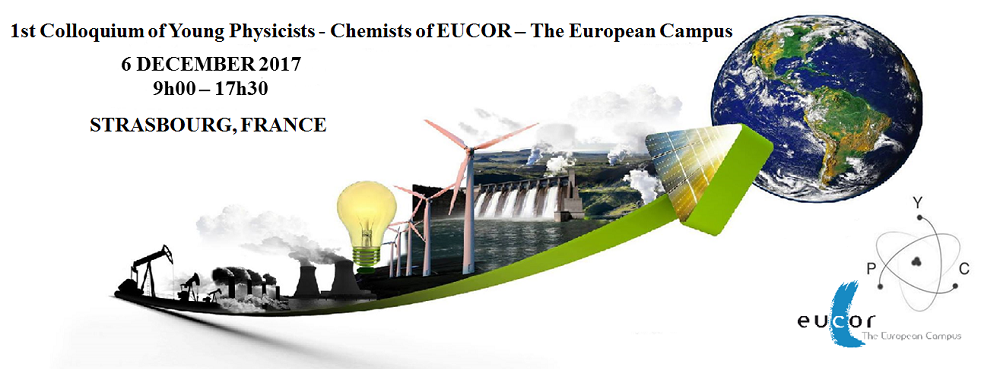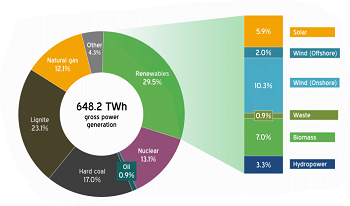
|
|
|
About the colloquium > Presentation of the theme
EUROPE
Energy transition can be defined as a fundamental structural shift within the energy sector for a country. This fundamental change propagates in synergy with renewable energies and push for energy efficiency combined with phasing out fossil energies[1]. Yet, this process differs between countries in terms of motivation, objectives, governance, challenges and opportunities. Paris global agreement endorses to a globalized effort of the participant countries to make this transition, and also to promote help to developing countries. This agreement has put in motion a movement that is now global. The European Union (EU), a leader in climate change and carbon reduction initiatives. EU's policies and regulations aim to reduce greenhouse gas (GHG) emissions to 80%-95% below 1990 levels, by 2050. Europe´s Energy roadmap 2050 explores pathways for the transition to meet these GHG emissions goals while promoting competitiveness and security of supply[2].
FRANCE
French energy consumption is approximately 1744.5 TWh, distributed across 4 verticals: commercial, residential, industry and transport. Regarding, its energy production[3] is equivalent to its energy consumption. 2/3rd of energy produced is obtained from nuclear energy, which makes it a non-traditional energy model. A typical traditional enery model is skewed towards fossil fuels sources, such as gas, oil and coal. Electricity de France (EDF) is in charge of the nuclear energy production. It also holds monopoly in the distribution, but not in the production of electricity. However, the contribution of renewables is only 16% of total energy produced by the country.

France is EU's second largest hub of renewable technologies innovation and production, after Germany, playing a key role in development of new environmentally friendly technologies. Moreover, France territory has the 3rd largest forest in Europe and is the largest european agriculture producer. The combination of green cover and agricultural spread ensures natural resources as feedstock materials. France has defined roadmap to decrease GHG emissions by 40%, get rid of the consumption of fossil fuels by 30%, decrease dependency of nuclear energy by 50%, and increase the use of renewables by 32%[4].
French government is engaged in continuing the energy transition, an example is the implementation of carbon tax by 2020 of €56 per ton and €100 by 2023 at national level. At international level, France has been leader and pioneer in transforming the energy model and set an example for the world to follow.
GERMANY
German economy is one of the largest, well developed and ranked fourth in the world by GDP. Apart from that, the country ranked sixth in global energy consumption between 2004 and 2007[5] where its energy consumption has reached 648.2 TWh in 2016. Germany is also pioneering an epochal transformation that it is called the energiewende – an energy revolution that scientists say all nations must one day complete if a climate disaster is to be averted.
Among large industrial nations, Germany is a leader. Last year about 29% of its electricity came from renewable sources such as wind and solar power, three times more from what it got a decade ago and more than twice what the United States gets today.[6]

The change accelerated after the 2011 meltdown at Japan’s Fukushima nuclear power plant, which led the country to declare that Germany would shut all the 17 of its own reactors by 2022. Nine have been switched off so far, and started depending more on renewable technologies. Germany, the world’s fourth largest economy, has promised some of the most aggressive emission cuts by 2020, a 40% cut from 1990 levels, and by 2050, at least 80 %. Germany could be a model for how we’ll get power in the future.[7]
SWITZERLAND
The energy sector in Switzerland is, by its structure and its importance, typical of a developed country. The main sources of energy in Switzerland are hydro and nuclear power. The electricity sector in Switzerland relies mainly on hydroelectricity. Since the Alps cover almost two-thirds of the country's land mass, providing many large mountain lakes and artificial reservoirs suited for hydropower. Also, 33 % of national electricity is produced from the nuclear reactors, which is a non-traditional way similar to France. Swiss wind power accounted for only 89 GWh or 0.1% of net-electricity production in 2013.[8]
With the exception of water and wood, Switzerland has no natural sources of energy. This is why it relies on oil, gas, coal and nuclear fuel imports to cover 80% of its energy needs.

Following the nuclear reactor accident in Fukushima in 2011, Switzerland embarked on an energy transition process known as the “Energy Strategy 2050”. The objective is to review the current energy legislation in order to stir the country towards reduced energy consumption, increased use of renewable energies and a gradual withdrawal from nuclear energy. There is also the ‘SwissEnergy’ programme, launched in 2001, which aims to achieve a 20% reduction in CO2 emissions and energy consumption from 1990 levels by 2020, accompanied by a 50% increase in the share of renewables between 2010 and 2020.
[1] World Energy Council. Global Energy Transitions. 2014
[3] International Energy Agency (IEA) energy balances, 2016
[4] www.gouvernement.fr/en/energy-transition
[5] US Energy Information Administration. "International Energy Statistics". Archived from the original on 8 January 2010. Retrieved 8 January 2013.
[6] https://en.wikipedia.org/wiki/Energy_in_Germany
[7] http://www.nationalgeographic.com/magazine/2015/11/germany-renewable-energy-revolution/
[8] https://en.wikipedia.org/wiki/Electricity_sector_in_Switzerland
| Online user: 1 | RSS Feed |

|
